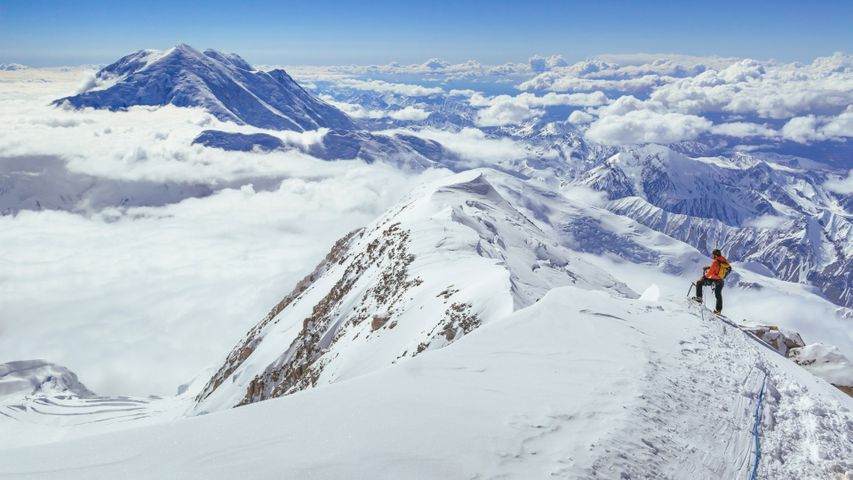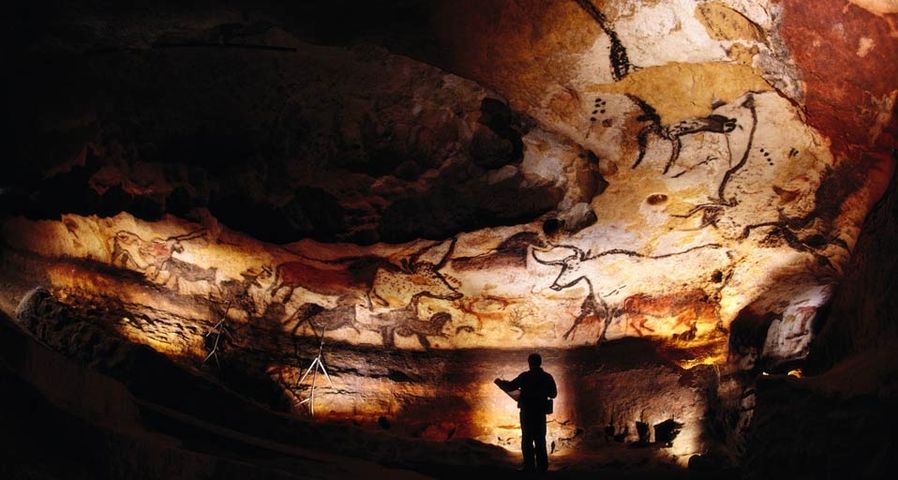An active lava tube, Hawai'i Volcanoes National Park, Hawaii
© Tom Schwabel/Tandem Stills + Motio
The most active volcano in the world. Hawai'i Volcanoes National Park at 106
The orange glow of a lava tube like the one pictured here is a frequent sight on Kīlauea, the youngest volcano on the island of Hawaii. In near constant eruption for the last 40 years, Kīlauea is widely considered the most active volcano in the world and is the main attraction at Hawai'i Volcanoes National Park, which was created on this day in 1916. The park, which was designated an International Biosphere Reserve and a World Heritage Site, also includes another active volcano, Mauna Loa, the world's most massive shield volcano, which last erupted in 1984. Together, they are among the most studied volcanoes in the world.
The volcanoes of the Big Island of Hawaii offer a real-time glimpse into the ongoing creation of the entire Hawaiian island chain, a process that has been underway for tens of millions of years. The Hawaiian Islands exist thanks to a volcanic hotspot on the ocean floor. Magma seeps from this hotspot and turns into solid rock. Once enough magma is extruded, the rock breaks the surface of the sea and becomes an island. The island continues to grow until the Pacific tectonic plate moves the island off the hotspot. The hotspot remains stationary, constantly creating new islands.
Hawaiian religion credits the creation of Hawaii to Pele, the goddess of fire and volcanoes. Possessing a fiery temper and a passionate nature, she is said to make her home in the Halema'uma'u caldera here on Kīlauea. From her volcano home she controls the flow of lava and frequency of eruptions. According to modern legend, she sometimes wanders near the park as an old woman wearing a red muumuu and accompanied by a white dog, as a warning that a new eruption is soon to come.
Related Images
Bing Today Images





 Hanukkah candles at a front door, Jerusalem, Israel
Hanukkah candles at a front door, Jerusalem, Israel
 Fire in fireplace
Fire in fireplace
 “Gates of Hell” burning fire pit near the village of Darvaza, in the Karakorum Desert, Turkmenistan
“Gates of Hell” burning fire pit near the village of Darvaza, in the Karakorum Desert, Turkmenistan
 Paintings of Paleolithic bulls and other animals crowd calcite walls of the Lascaux caves in southwestern France
Paintings of Paleolithic bulls and other animals crowd calcite walls of the Lascaux caves in southwestern France
